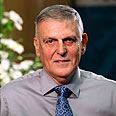
Israeli Nobel laureate's crystals fell to earth in meteorites
Only known natural examples of Dan Shechtman's quasicrystals, now used in everyday objects like razor blades, non-stick frying pans, arrived on earth in meteorites, scientists find
Some researchers believe they could be used to produce materials that are more slippery than Teflon.
Until a few years ago they were thought not to exist in nature and the story of the search for them reads more like the script of an Indiana Jones movie than a research project involving secret diaries and smugglers.
"That is a novel," Paul Steinhardt at Princeton University in the United States told Reuters.
The discovery of natural quasicrystals will be "a real shocker" for many geologists and those who synthesize them under laboratory conditions, he said.
In 2009, Steinhardt and Luca Bindi at the University of Florence in Italy identified them in a tiny rock sample thought to be from the Koryak Mountains in the far east of Russia.
Tests on that only known natural sample suggested it came from a meteorite.
The claim had its doubters, so Steinhardt organized an expedition to Russia to hunt for more examples. His team panned one and half tons of sediment by hand, and found nine grains containing quasicrystals.
"Much to everyone’s amazement, we found more samples," Steinhardt said. "Even members of our team were doubtful we would do that."
A Florence museum had bought the original sample in 1990 from a collector in Amsterdam, who has since died. The scientists found the collector’s widow, who showed them secret diaries with an account of a smuggling operation to get the rock out of the country.
The diaries eventually led them to Valery Kryachko, who dug up the rock in the remote part of Russia in 1979.
Discovery raises questions
Shechtman’s work on quasicrystals in the 1980s was initially treated with skepticism and derision by colleagues, who argued quasicrystals were not possible, but since then a variety of them have been made under controlled conditions in the lab.
The new samples were found in an area that does not have the extreme pressure needed to produce them, strengthening the case that they were brought to earth about 15,000 years ago by a meteorite that was formed 4.5 billion years ago at the beginning of the solar system, the researchers said.
Steinhardt says the discovery of natural quasicrystals will raise many questions for geologists.
"How did the quasicrystal form so perfectly inside a complex meteorite when we normally have to work hard in the laboratory to get anything as perfect?" said Steinhardt.
"At the moment, we are at the tip of the iceberg," he said.










